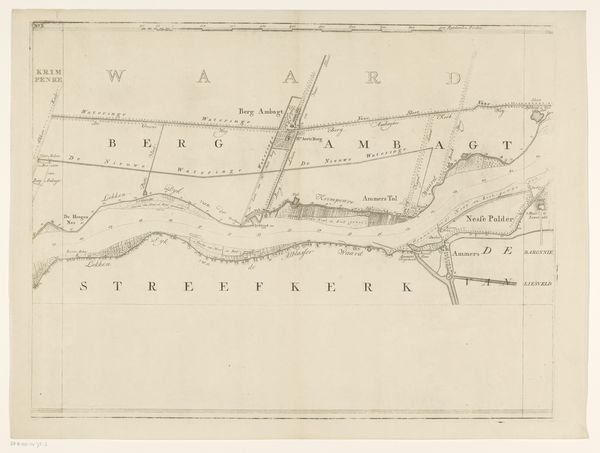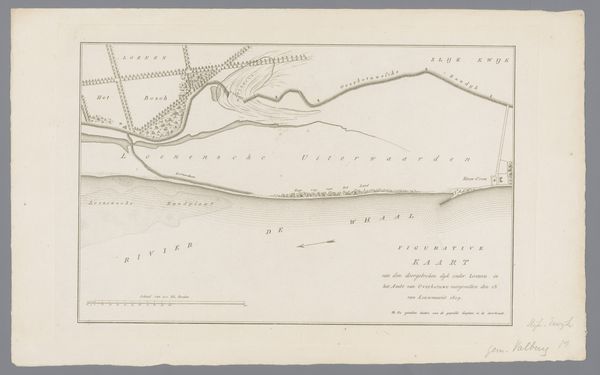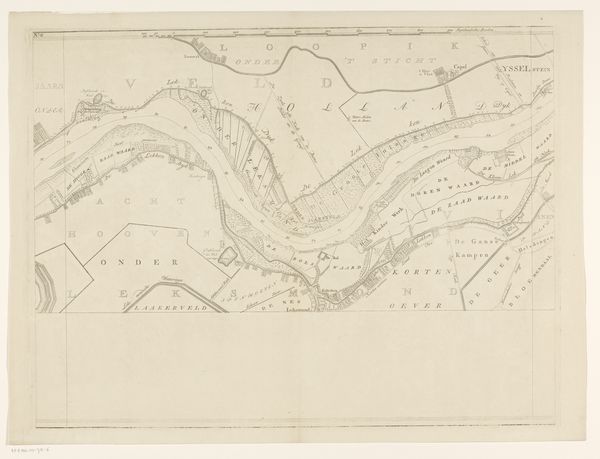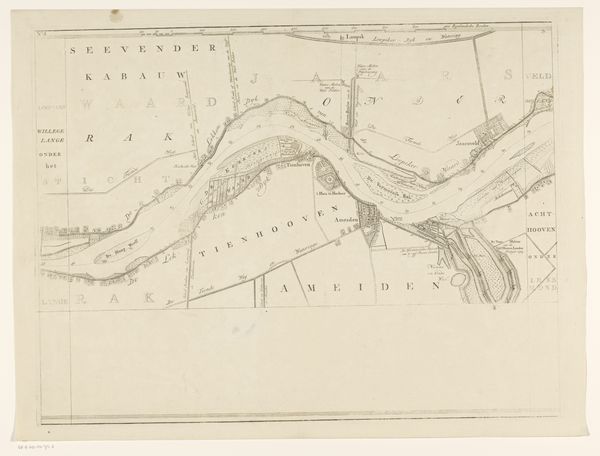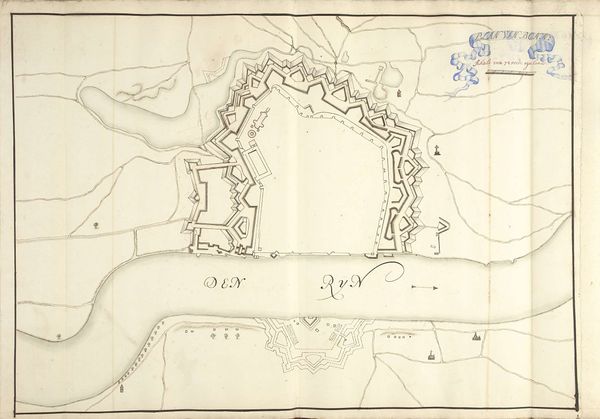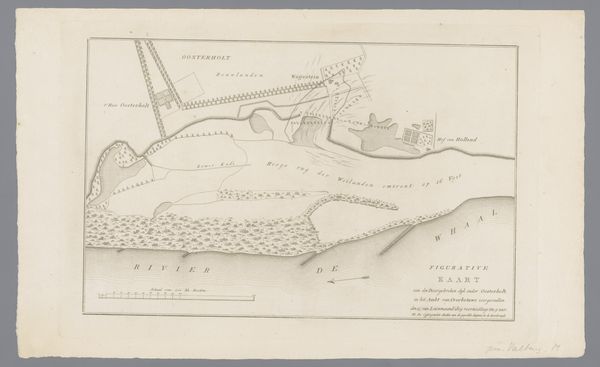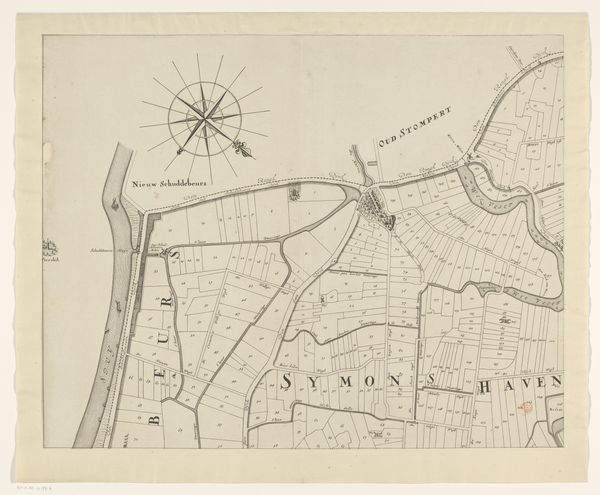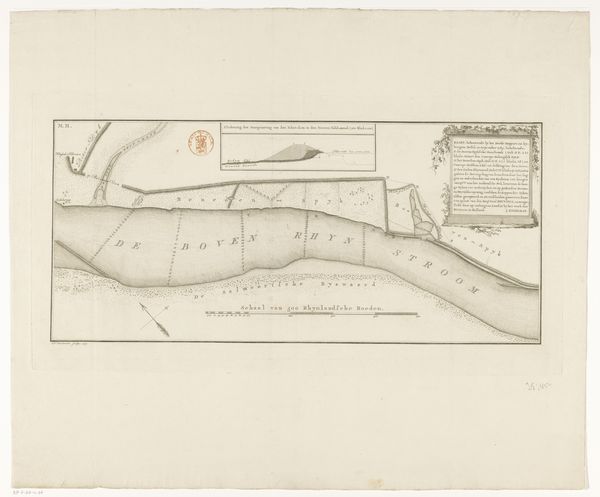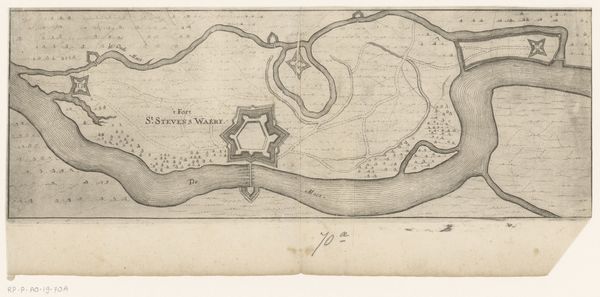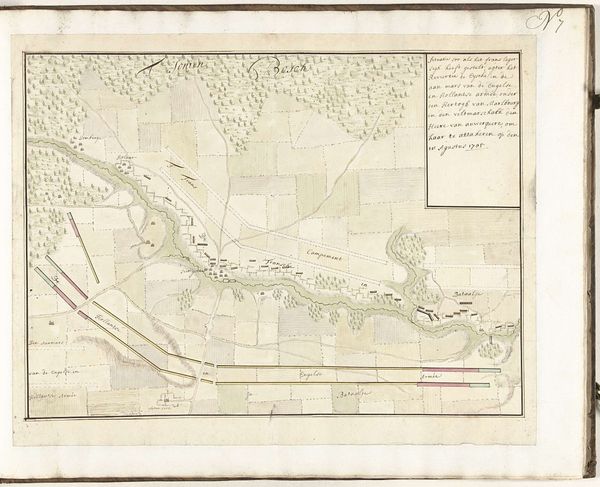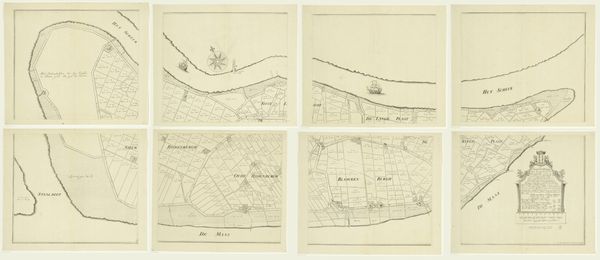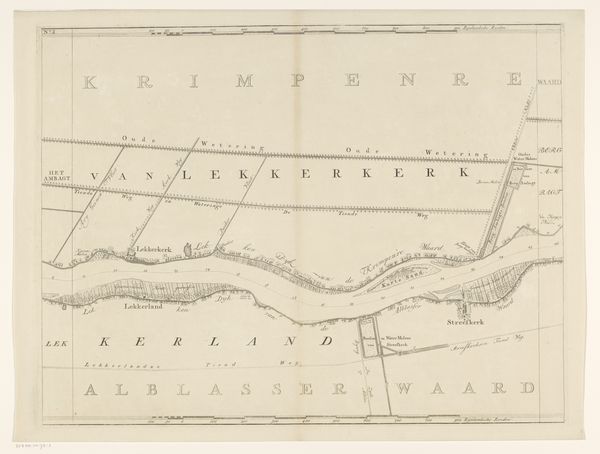
Dimensions: height 501 mm, width 4112 mm
Copyright: Rijks Museum: Open Domain
Curator: This detailed map before us, "Kaart van de rivier de Lek, bestaande uit zeven delen," by Isaak Tirion, dating back to 1764-1765, showcases a segmented view of the Lek River. The print employs engraving, ink, and pen work on paper. Editor: Immediately, the delicate linework impresses me. The monochromatic palette is serene, offering an analytical aesthetic that's remarkably refined, isn’t it? Curator: Indeed. Tirion presents a comprehensive survey reflecting 18th-century advancements in cartography, demonstrating the practical necessities and administrative demands of the time. The baroque influence blends interestingly with this precision. Editor: I agree. The detailed line work constructs the river's shape, but also delineates various terrains through which it winds. There is something beautifully repetitive in the grid overlaid to help situate the image. Curator: It reflects the rise of Enlightenment rationalism, where accurate representation was seen as a crucial aspect of governing. It shows how such prints informed not just the geography of a place, but also strategies about its social use and commercial value. Editor: Seeing it broken into seven distinct parts makes me wonder how people engaged with it. The very idea that the map existed across panels speaks to an idea about disseminating such knowledge, making it mobile. Curator: It's a reminder that these weren't passive artworks, but objects designed for specific social roles and purposes. These prints were vital for trade, military planning, and administering regions of land – it would've offered individuals and the state new agency within the space depicted. Editor: Looking closer, I start to see the underlying symbolism beneath this precision—each carefully drawn line serves not just descriptive purposes, but tells of our relationship with natural forms. Curator: So, we move from analyzing it formally, to also understanding its function within broader societal goals? The power of art lies not just in how it looks, but what it enables people to achieve. Editor: Precisely. What seemed initially to me just calm lines turns out to be dynamic, hinting at something important historically.
Comments
No comments
Be the first to comment and join the conversation on the ultimate creative platform.

